Ever feel like your abs need more than endless crunches? Enter the dumbbell Russian twist—a core-crushing move that targets your obliques, abs, and stability all at once. The short answer: yes, it works. Grab your best-selling dumbbells, twist, and keep reading to discover why your core will thank you.
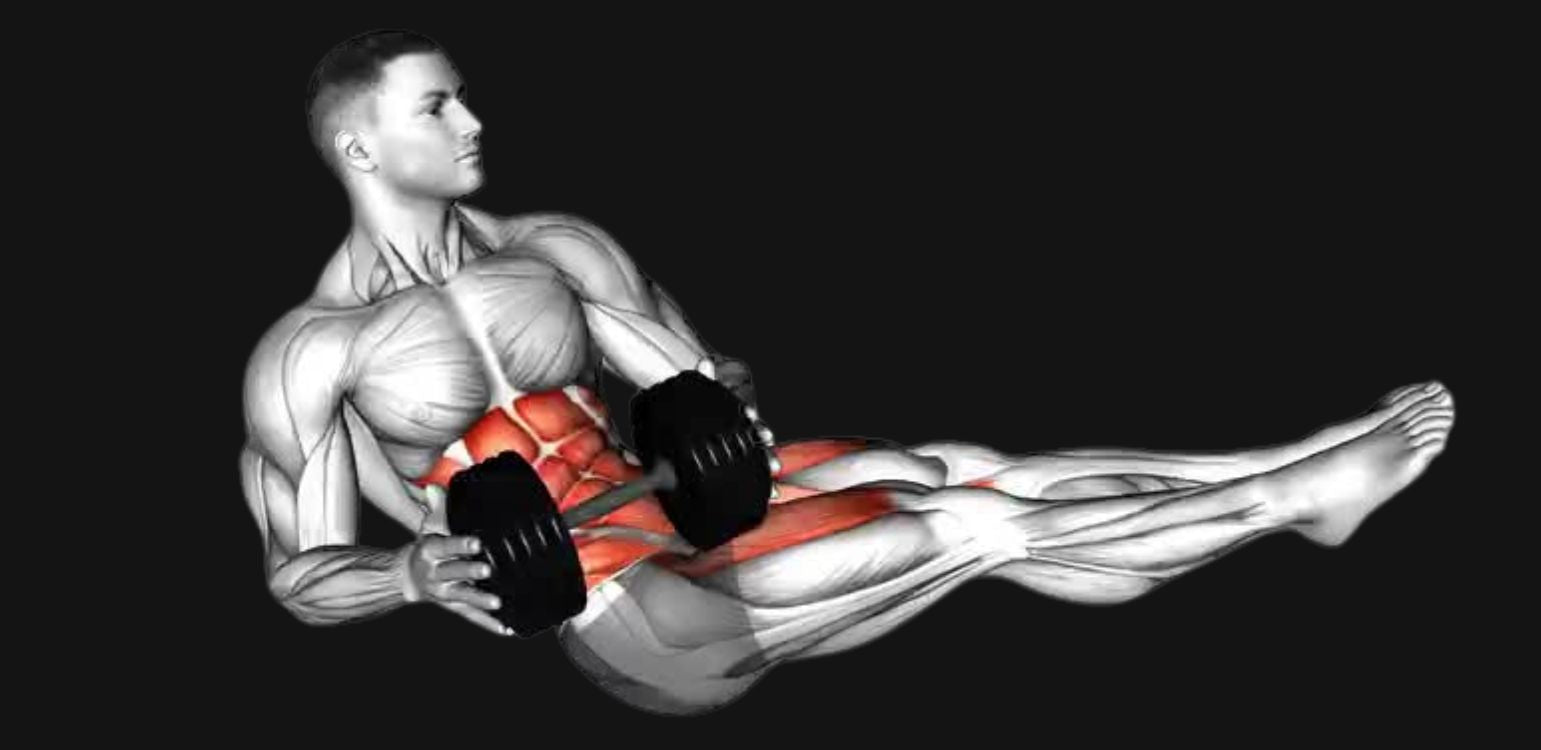
Dumbbell Russian Twists: Build Core Strength, Stability & Oblique Power
Why Train Dumbbell Russian Twists?
Russian twist benefits vs standard ab exercises
Crunches and sit-ups are great, but they only hit your abs in one direction. The dumbbell Russian twist adds rotation, which fires up your obliques and deep stabilizers. Think of it as training your core to work the way you actually move in real life—twisting, reaching, and bracing.
Why weighted Russian twist increases intensity
Bodyweight twists burn, but add a dumbbell and suddenly your abs are begging for mercy. A weighted Russian twist challenges your stability and makes every rep tougher. It’s like going from pedaling a bike on flat ground to climbing a hill with a heavy backpack—your muscles don’t get a break.
Dumbbell Russian twist vs kettlebell Russian twist — key differences
A dumbbell is balanced and easier to control. A kettlebell, with its awkward weight distribution, forces your grip and wrists to work harder. Both build strength, but the dumbbell Russian twist is smoother while the kettlebell Russian twist is grittier. Try both to see which one suits your style.
Short answer — are Russian twists good for your core?
Yes. They strengthen your obliques, challenge your balance, and improve rotational power. If you want a strong, athletic midsection—not just flat abs—then Russian twists deserve a spot in your workout.
Anatomy — What Muscles Do Dumbbell Russian Twists Work?

Russian twist muscles worked — obliques, abdominals & stabilizers
The main target here is your obliques, the muscles on the side of your waist. But they don’t work alone—your abs, lower back, and core stabilizers all join in to keep you steady.
Twist oblique activation explained
Every rotation forces your obliques to contract and control the motion. This constant twist oblique activation builds not only strength but also the tight, carved look people notice.
Secondary muscles — hip flexors, spinal stabilizers & shoulders
Your hip flexors help keep your legs off the ground. Your spinal stabilizers prevent your back from collapsing. And your shoulders keep the dumbbell steady. It’s more than just an ab move—it’s a full midsection workout.
Quick breakdown: what do Russian twists work?
To sum it up: abs, obliques, hip flexors, stabilizers, and shoulders. If you’ve ever wondered what muscles do Russian twists work?—the answer is your entire core team.
Core Dumbbell Russian Twist Variations
Standard seated Russian twist (classic version)
Sit back, lift your feet, and twist. The seated Russian twist is the go-to variation most people start with.

Weighted Russian twist with dumbbells for progression
Add a dumbbell and you instantly raise the difficulty. A dumbbell twist doubles the challenge, forcing your core to fight gravity and rotation at the same time.

Kettlebell Russian twist vs med ball Russian twist
Swap the dumbbell for a kettlebell and you’ll feel more grip and wrist strain. Use a med ball for throws or partner training. Each option changes the challenge but keeps the obliques burning.

Decline Russian twist for added challenge
Want to crank it up? Sit on a decline bench and try twisting. A decline Russian twist makes your abs work overtime because of the steeper angle.

Single-arm dumbbell Russian twist for asymmetry & control
Holding the dumbbell with one hand forces your body to resist tipping over. This single-arm dumbbell twist adds a stability challenge that torches your obliques.

Advanced & Specialty Twist Options
Gym Russian twists with cables or machines
Cables or machines mimic the twist with constant resistance. These gym Russian twists are great if you want controlled tension throughout the motion.
Med ball Russian twist & stability ball twists
Med balls add explosiveness with tosses. Stability balls demand balance and control. Both are solid ways to mix up your ab routine.
Russian twist alternatives — side plank rotations, woodchoppers, V-sits
Not into twists? No problem. Alternatives like woodchoppers or side plank rotations hit similar muscles without the seated position.
Seated Russian twist vs standing rotational variations
The seated version isolates your core. The standing version feels more “real life” because you’re twisting the way you move in sports or daily activities.
Combining dumbbell twists with push-ups, flys & oblique finishers
Pair Russian twists with push-ups or flys and you’ll hit your chest, arms, and core in one brutal finisher.
How to Perform Dumbbell Russian Twists Correctly
Step-by-step: how to do a dumbbell Russian twist
-
Sit with knees bent and feet lifted.
-
Hold a dumbbell close to your chest.
-
Lean back slightly and twist your torso side to side.
-
Keep the motion controlled.
Proper seated position, core engagement & range of motion
Keep your chest tall and your core tight. Don’t flop side to side—rotate smoothly from your torso.
Common mistakes — twisting with arms, losing balance, rushing reps
Avoid swinging your arms or speeding through. The twist should come from your abs, not your shoulders.
Breathing & tempo for maximum core engagement
Exhale as you rotate, inhale as you reset. Breathing properly helps your core stay braced and powerful.
Russian twist gif & video breakdown for visual learners
Sometimes words aren’t enough. Watching a Russian twist gif or short clip helps lock in perfect form.
Sample Dumbbell Russian Twist Workouts
Beginner core circuit — bodyweight twists + planks
Start simple: bodyweight Russian twists, planks, and crunches. Focus on form over speed.
Intermediate ab workout — dumbbell Russian twists + decline twists + crunches
Add resistance with dumbbells and increase the challenge with a decline bench. Your abs will feel the difference.
Advanced hypertrophy core routine — weighted twists, med ball tosses, rotational push-ups
For athletes or advanced lifters, explosive med ball throws and weighted Russian twists make for a brutal combo.
Full gym Russian workout featuring dumbbell Russian twists
Combine dumbbells, cables, and bodyweight moves for a balanced, gym-ready ab session.
Dumbbells & Equipment by Brand
Dumbbell options — Troy urethane dumbbells, Troy rubber dumbbells, Troy pro style dumbbells, York cast iron, VTX, TAG Fitness, Intek, TKO, BodyKore, neoprene, vinyl, rubber hex, hex
For dumbbell Russian twists, you don’t need huge weights. Instead, choose dumbbells that feel comfortable in your hands and allow smooth rotation.
Why dumbbell grip & balance matter in rotational core training
A dumbbell with a secure grip keeps you focused on your core—not worrying about slipping. That’s why balanced weights like Troy urethane dumbbells or rubber hex dumbbells are solid picks.
Best-selling dumbbells (5–150 lbs) recommended for Russian twists
Our best-selling dumbbells cover all ranges—5 lbs for beginners, up to 150 lbs for pros. Whether you’re into pro style or cast iron, we’ve got options that fit.
Price, Value & Promotions
Dumbbell Russian twists vs med ball twists — cost & versatility
A dumbbell can be used for dozens of exercises beyond Russian twists. Med balls? Not as versatile. Dumbbells give you more training mileage.
Bulk discounts & custom pricing for dumbbell sets
Looking to upgrade your home gym? We offer bulk discounts and custom deals for anyone buying full dumbbell sets.
Weekly 5% promos on best-selling dumbbells
Every week, we run a 5% promo on our best-selling dumbbells—making it even easier to grab the weights you need.
Final Takeaway — Why Dumbbell Russian Twists Belong in Core Training
Russian twists are simple, effective, and adaptable. From beginners learning control to athletes chasing rotational power, the dumbbell Russian twist delivers.
They’re not just an ab move—they’re a complete core builder. And with Troy, York, VTX, and Pro Style dumbbells (5–150 lbs) available with bulk discounts, you’ve got every reason to twist your way to a stronger core.
Frequently Asked Questions
BEST-SELLING DUMBBELLS
-

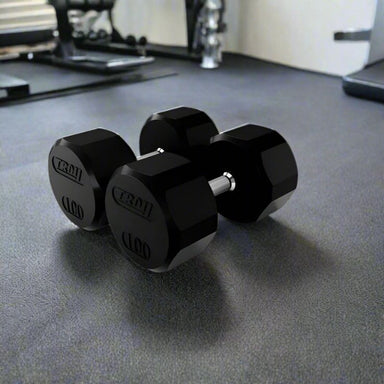 Sale
Troy TROY TSD-R 12-Sided Rubber Encased Dumbbellsfrom Original Price $99.00from $48.00
Sale
Troy TROY TSD-R 12-Sided Rubber Encased Dumbbellsfrom Original Price $99.00from $48.00Looking for Durable and Quiet Dumbbells? Discover TROY TSD-R 12-Sided Rubber Dumbbells! The TROY TSD-R 12-Sided Rubber Encased Dumbbells, also know...
View full details -
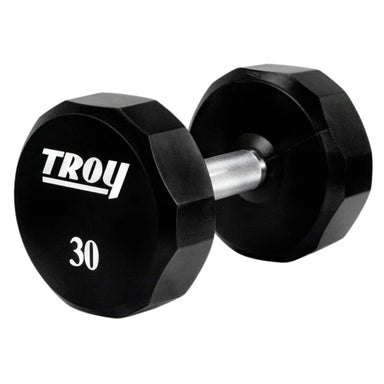
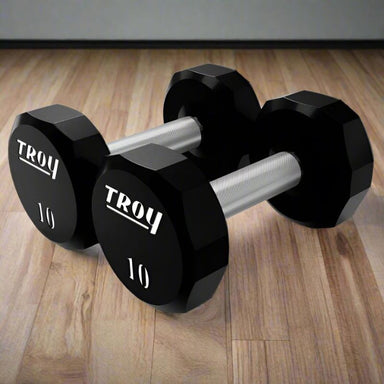 Sale
Troy TROY TSD-U 12-Sided Urethane Encased Dumbbellfrom Original Price $129.00from $123.00
Sale
Troy TROY TSD-U 12-Sided Urethane Encased Dumbbellfrom Original Price $129.00from $123.00Looking for Durable, Commercial-Grade Troy Urethane Dumbbells? Meet the TROY 12-Sided Urethane Dumbbells! For those who demand top-quality equipmen...
View full details -
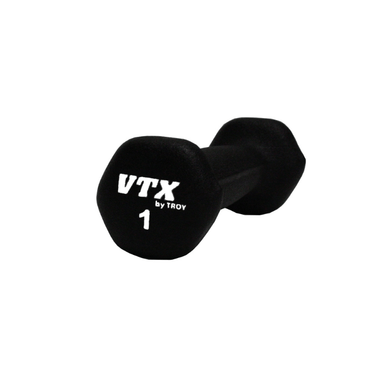
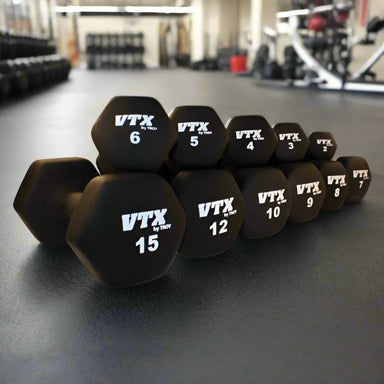 Sale
VTX VTX GTD Neoprene Textured Hex Dumbbellfrom Original Price $99.00from $23.00
Sale
VTX VTX GTD Neoprene Textured Hex Dumbbellfrom Original Price $99.00from $23.00Looking for Durable Hex Dumbbells? Try the VTX GTD Neoprene Textured Hex Dumbbell! The VTX GTD Neoprene Textured Hex Dumbbell combines style and fu...
View full details -
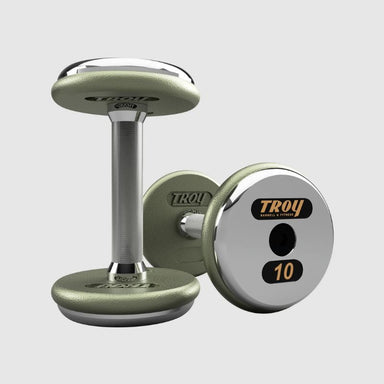
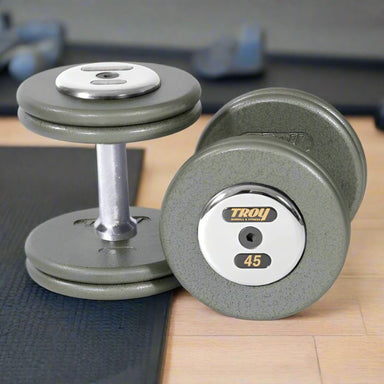 Sale
Troy TROY Pro-Style Gray Dumbbell Straight Handle & Chrome Endcapsfrom Original Price $149.00from $123.00
Sale
Troy TROY Pro-Style Gray Dumbbell Straight Handle & Chrome Endcapsfrom Original Price $149.00from $123.00Looking for Professional-Grade Dumbbells? Get the TROY Pro-Style Gray Dumbbell Straight Handle & Chrome Endcaps! The TROY Pro-Style Gray Dumbbe...
View full details -
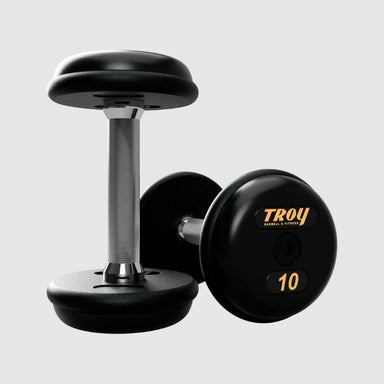
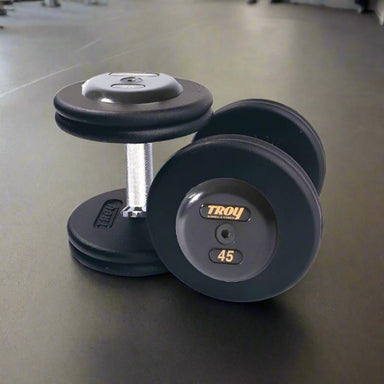 Sale
Troy TROY PFD-R Pro-Style Black Dumbbell Straight Handle & Rubber Endcapsfrom Original Price $199.00from $123.00
Sale
Troy TROY PFD-R Pro-Style Black Dumbbell Straight Handle & Rubber Endcapsfrom Original Price $199.00from $123.00Looking for Durable, Pro-Grade Dumbbells? Check Out the TROY Pro-Style Black Dumbbells with Rubber Endcaps! The TROY PFD-R Pro-Style Black Dumbbell...
View full details -
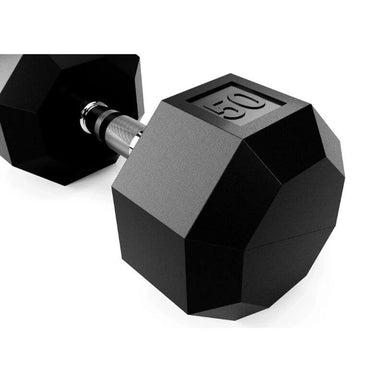
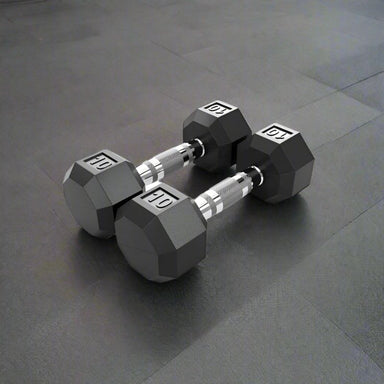 Sale
VTX VTX SD-R 8-Sided Rubber Encased Hex Dumbbellfrom Original Price $99.00from $48.00
Sale
VTX VTX SD-R 8-Sided Rubber Encased Hex Dumbbellfrom Original Price $99.00from $48.00Looking for Durable Rubber Dumbbells? Discover the VTX SD-R 8-Sided Rubber Encased Hex Dumbbell! The VTX SD-R 8-Sided Rubber Encased Hex Dumbbell i...
View full details -
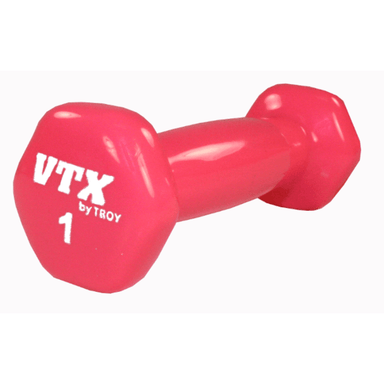
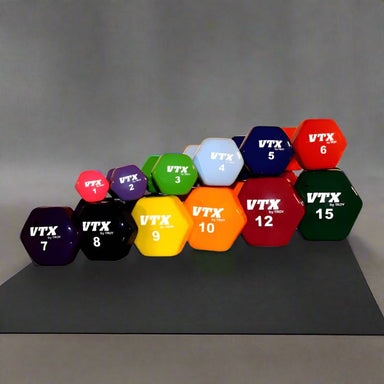 Sale
VTX VTX VD Vinyl Hex Dumbbellfrom Original Price $59.00from $36.00
Sale
VTX VTX VD Vinyl Hex Dumbbellfrom Original Price $59.00from $36.00Looking for Durable, Colorful Dumbbells? Check Out the VTX VD Vinyl Hex Dumbbell! The VTX VD Vinyl Hex Dumbbell is a versatile choice for both grou...
View full details -
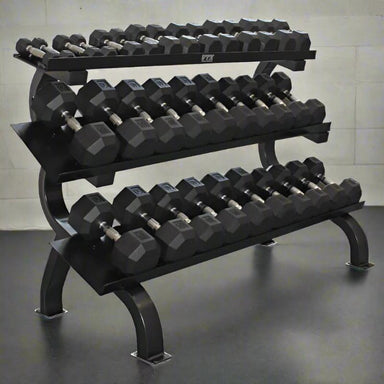
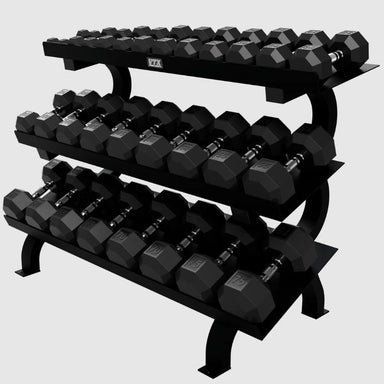 Sale
VTX VTX by Troy VERTPAC-SDR75 Rubber Dumbbell Set with 3 Tier Shelf RackOriginal Price $5,166.00Current Price $3,998.00
Sale
VTX VTX by Troy VERTPAC-SDR75 Rubber Dumbbell Set with 3 Tier Shelf RackOriginal Price $5,166.00Current Price $3,998.00Need a Space-Saving Dumbbell Set with Rack? Try the VTX by Troy VERTPAC-SDR75 Rubber Dumbbell Set with 3 Tier Shelf Rack! The VTX by Troy VERTPAC-S...
View full details -
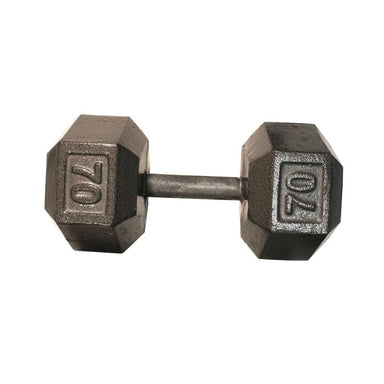
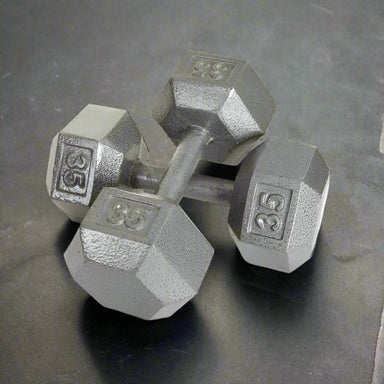 Sale
USA Sports by Troy USA by Troy IHD Hex Gray Cast Iron Dumbbellfrom Original Price $99.00from $36.00
Sale
USA Sports by Troy USA by Troy IHD Hex Gray Cast Iron Dumbbellfrom Original Price $99.00from $36.00Looking for Reliable Cast Iron Dumbbells? The USA by Troy IHD Hex Gray Cast Iron Dumbbells Are Built to Last! The USA by Troy IHD Hex Gray Cast Iro...
View full details -

 Sale
Troy Troy VERTPAC-TSDR75 12-Sided Dumbbells Set with 3 Tier Shelf RackOriginal Price $5,125.64Current Price $4,511.00
Sale
Troy Troy VERTPAC-TSDR75 12-Sided Dumbbells Set with 3 Tier Shelf RackOriginal Price $5,125.64Current Price $4,511.00Need an All-in-One Dumbbell Storage Solution? Try the Troy VERTPAC-TSDR75 12-Sided Dumbbells Set with 3 Tier Shelf Rack! The Troy VERTPAC-TSDR75 is...
View full details -
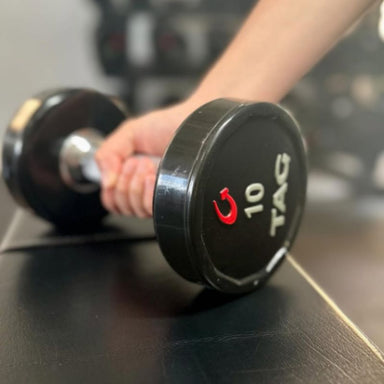
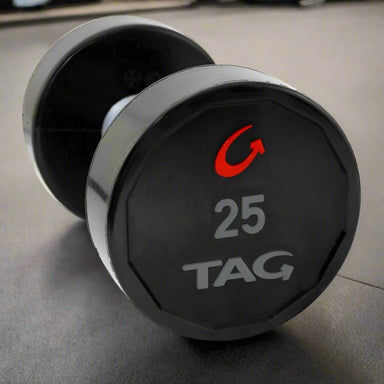 Sale
TAG Fitness TAG Fitness Premium Ultrathane Dumbbell (Pairs)from Original Price $99.00from $48.00
Sale
TAG Fitness TAG Fitness Premium Ultrathane Dumbbell (Pairs)from Original Price $99.00from $48.00Looking for Long-Lasting Dumbbells? Discover the TAG Fitness Premium Ultrathane Dumbbell! The TAG Fitness Premium Ultrathane Dumbbell is the ultima...
View full details -
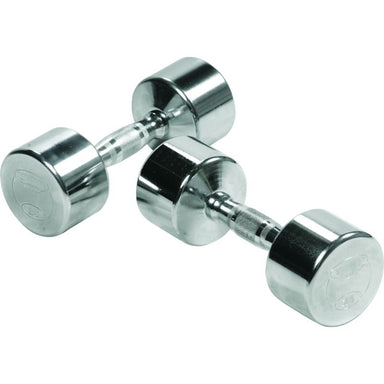
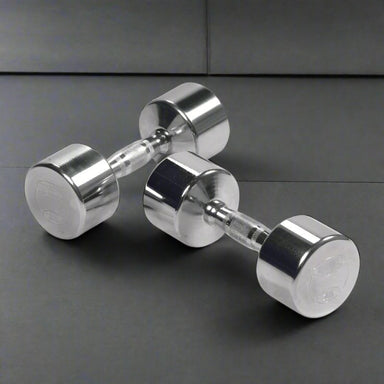 Sale
York York Professional Chrome Dumbbell w/ Ergo Grip (Solid Steel)from Original Price $59.00from $28.00
Sale
York York Professional Chrome Dumbbell w/ Ergo Grip (Solid Steel)from Original Price $59.00from $28.00Looking for Premium Dumbbells? Check Out the York Professional Chrome Dumbbell w/ Ergo Grip (Solid Steel)! The York Professional Chrome Dumbbell w/...
View full details -
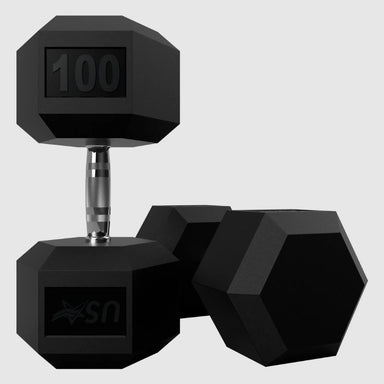
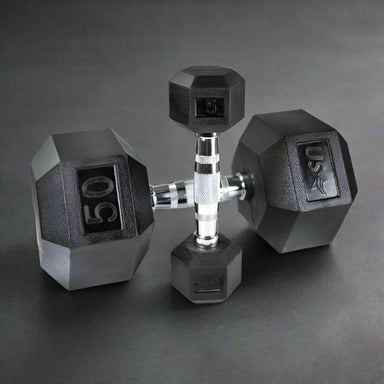 Sale
USA Sports by Troy USA by Troy HD-R Rubber Hex Dumbbellsfrom Original Price $99.00from $48.00
Sale
USA Sports by Troy USA by Troy HD-R Rubber Hex Dumbbellsfrom Original Price $99.00from $48.00Searching for Reliable Hex Dumbbells? Discover the USA by Troy Rubber Hex Dumbbells! The USA by Troy HD-R Rubber Hex Dumbbells are designed to meet...
View full details -
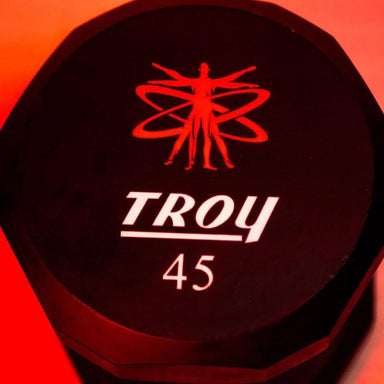
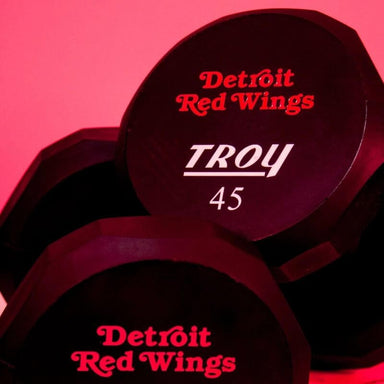 Sale
Troy Troy TSD-UL 12-Sided Urethane Dumbbell with Custom Logofrom Original Price $179.00from $173.00
Sale
Troy Troy TSD-UL 12-Sided Urethane Dumbbell with Custom Logofrom Original Price $179.00from $173.00Looking to Promote Your Brand in the Gym? Try the Troy TSD-UL 12-Sided Urethane Dumbbell with Custom Logo The Troy TSD-UL 12-Sided Urethane Dumbbel...
View full details -
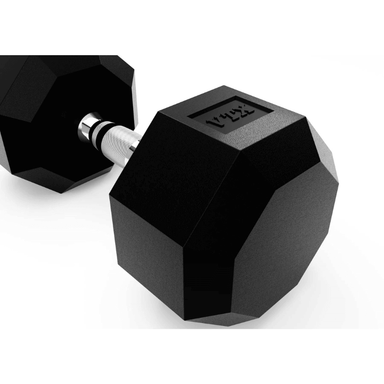
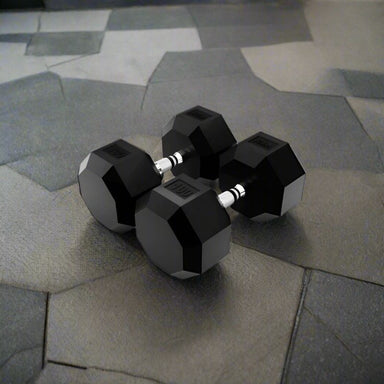 Sale
VTX VTX SD-U 8-Sided Urethane Encased Dumbbellfrom Original Price $99.00from $48.00
Sale
VTX VTX SD-U 8-Sided Urethane Encased Dumbbellfrom Original Price $99.00from $48.00Looking for Durable, Anti-Roll Urethane Dumbbells? Meet the VTX SD-U 8-Sided Urethane Encased Dumbbell! The VTX SD-U 8-Sided Urethane Encased Dumbb...
View full details -
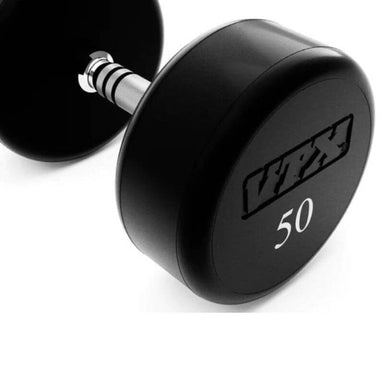
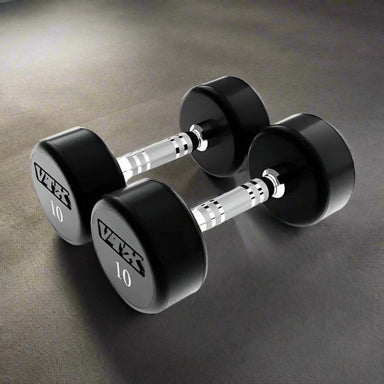 Sale
VTX VTX XD-U Urethane Round Head Dumbbellfrom Original Price $99.00from $59.01
Sale
VTX VTX XD-U Urethane Round Head Dumbbellfrom Original Price $99.00from $59.01Looking for Durable Urethane Dumbbells? Meet the VTX XD-U Urethane Round Head Dumbbell The VTX XD-U Urethane Round Head Dumbbell is perfect for lig...
View full details -

 Sale
VTX VTX VERTPAC-SDR100 Rubber Encased Dumbbells "20-Pair Rack" PackOriginal Price $6,500.00Current Price $5,061.00
Sale
VTX VTX VERTPAC-SDR100 Rubber Encased Dumbbells "20-Pair Rack" PackOriginal Price $6,500.00Current Price $5,061.00Need a Space-Saving Dumbbell Set? Try the VTX VERTPAC-SDR100 Rubber Dumbbell Set with Rack! The VTX VERTPAC-SDR100 Rubber Encased Dumbbells "20-Pai...
View full details -
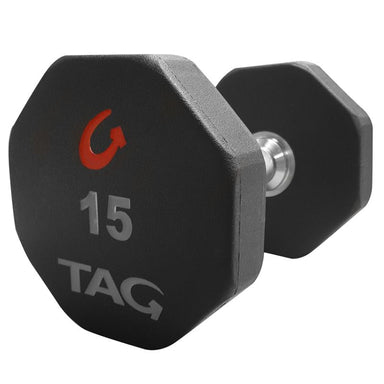
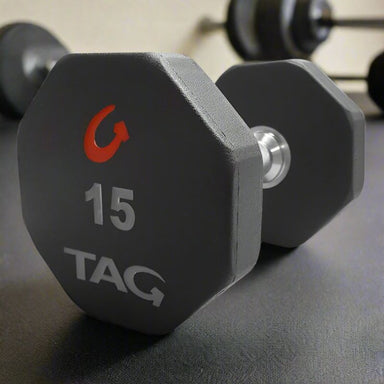 Sale
TAG Fitness TAG Fitness U8DB 8 Sided Premium Ultrathane Dumbbellfrom Original Price $99.00from $44.00
Sale
TAG Fitness TAG Fitness U8DB 8 Sided Premium Ultrathane Dumbbellfrom Original Price $99.00from $44.00Looking for a Durable and Stylish Dumbbell Set? Discover the TAG Fitness U8DB 8 Sided Premium Ultrathane Dumbbell! The TAG Fitness U8DB 8 Sided Pre...
View full details -
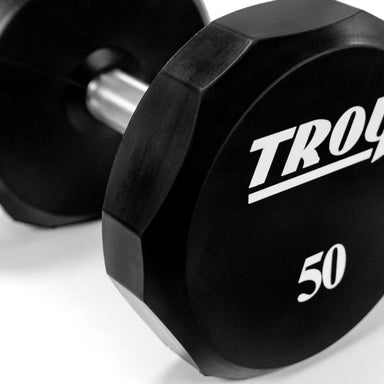
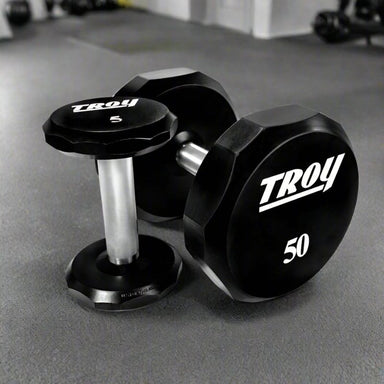 Sale
Troy Troy TSD-U 12-Sided Urethane Encased Dumbbell Sets (Sold in 5lb Increments)from Original Price $1,338.12from $1,323.00
Sale
Troy Troy TSD-U 12-Sided Urethane Encased Dumbbell Sets (Sold in 5lb Increments)from Original Price $1,338.12from $1,323.00Looking for Reliable Dumbbell Sets? Try the Troy TSD-U 12-Sided Urethane Encased Dumbbell Sets (Sold in 5lb Increments)! The Troy TSD-U 12-Sided Ur...
View full details -
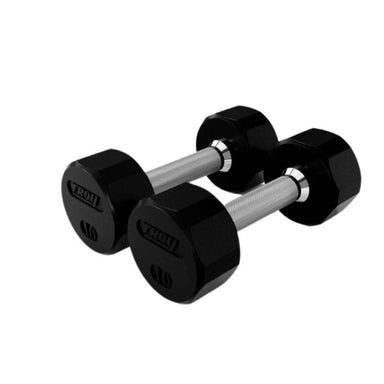
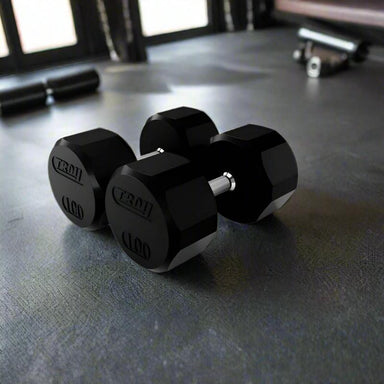 Troy Troy TSD-R 12-Sided Rubber Encased Dumbbell Sets (5 lb Increments)from $786.00
Troy Troy TSD-R 12-Sided Rubber Encased Dumbbell Sets (5 lb Increments)from $786.00Need a Quiet, Commercial-Grade Set? Try the Troy TSD-R 12-Sided Rubber Encased Dumbbell Sets! The Troy TSD-R 12-Sided Rubber Encased Dumbbell Sets ...
View full details -
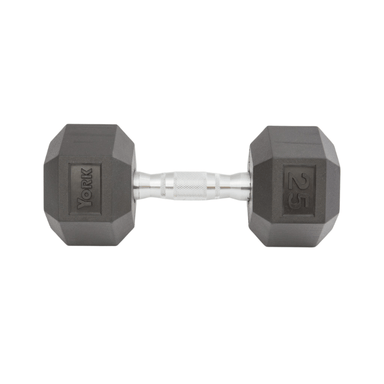
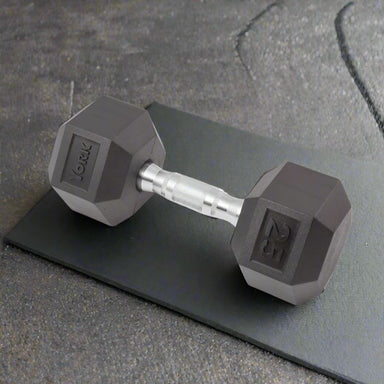 Sale
York York Rubber Hex Dumbbell w/ Chrome Ergo Handlefrom Original Price $59.00from $23.00
Sale
York York Rubber Hex Dumbbell w/ Chrome Ergo Handlefrom Original Price $59.00from $23.00Looking for Durable Rubber Hex Dumbbells? Discover the York Rubber Hex Dumbbell w/ Chrome Ergo Handle The York Rubber Hex Dumbbell w/ Chrome Ergo H...
View full details -
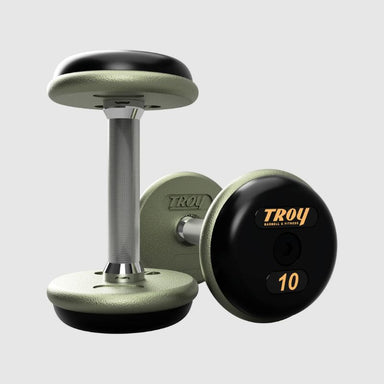
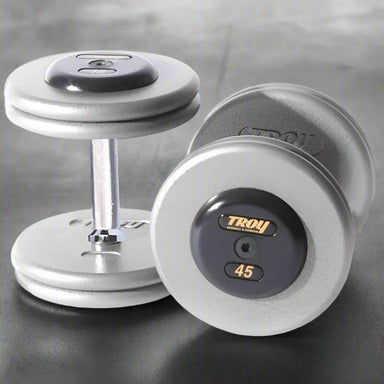 Sale
Troy TROY HFD-R Pro-Style Gray Dumbbell Straight Handle & Rubber Endcapsfrom Original Price $149.00from $123.00
Sale
Troy TROY HFD-R Pro-Style Gray Dumbbell Straight Handle & Rubber Endcapsfrom Original Price $149.00from $123.00Looking for a Sturdy Straight Handle Dumbbell? Try the TROY HFD-R Pro-Style with Rubber Endcaps! The TROY HFD-R Pro-Style Gray Dumbbell Straight Ha...
View full details -
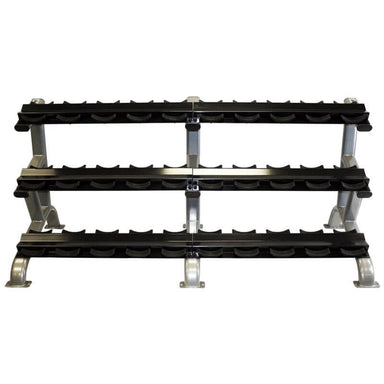
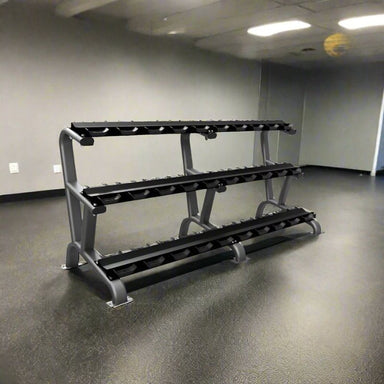 Sale
Troy TROY DR-15 3 Tier 15 Pair Dumbbell Saddle RackOriginal Price $1,623.00Current Price $1,323.002 colors available
Sale
Troy TROY DR-15 3 Tier 15 Pair Dumbbell Saddle RackOriginal Price $1,623.00Current Price $1,323.002 colors availableLooking for Efficient Dumbbell Storage? Discover the TROY DR-15 3 Tier 15 Pair Dumbbell Saddle Rack! The TROY DR-15 3 Tier 15 Pair Dumbbell Saddle ...
View full details -
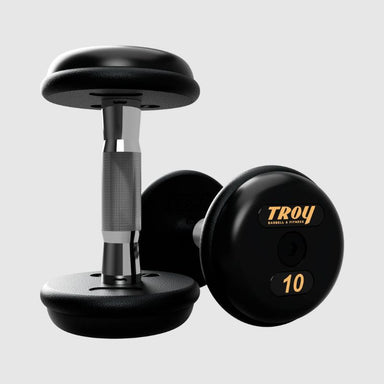
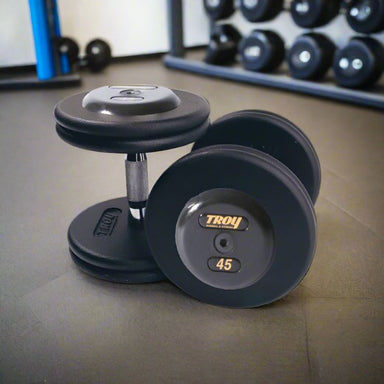 Troy TROY PFDC-R Pro-Style Black Dumbbell Contoured Handle & Rubber Endcapsfrom $179.00
Troy TROY PFDC-R Pro-Style Black Dumbbell Contoured Handle & Rubber Endcapsfrom $179.00Searching for Premium Dumbbells? Try the TROY PFDC-R Pro-Style Black Dumbbells with Contoured Handle & Rubber Endcaps! For those seeking durabl...
View full details


















































Leave a comment